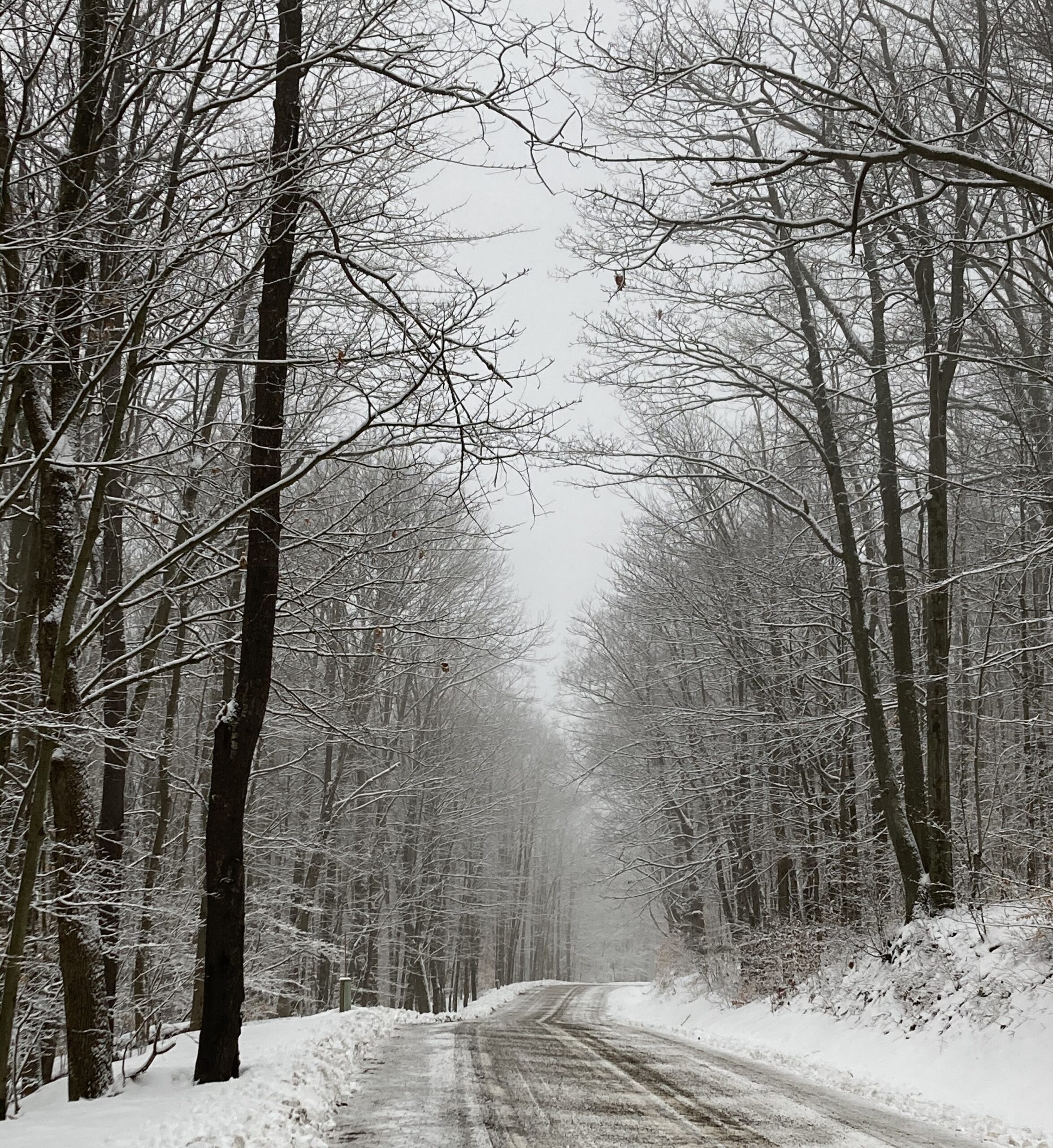My wife and I took a long walk late in the afternoon. The sky was mostly dark grey. It had rained earlier, with a touch of snow. With the dropping temperature, the rain turned to ice, which coated all the bushes, tree branches, and electric lines. There was just a hint of the setting sun, but that hint was reflected and augmented by the ice, so everywhere we looked there were individual hands and fingers of light, thousands of them.
As the light disappeared further, instead of the dark descending on us from above, it was as if it emerged directly from inside everything we noticed⎼ from each tree or bush my eyes met or from the road itself. Details and colors, and the remnants of light icing the branches seemed to be sitting on darkness and winking out.
In previous years, during the winter I did not often go outside to exercise. It takes heavier clothes and boots, mittens, and hats, and the road and paths are often slippery. I used to work out in the gym or martial arts dojo. My wife did yoga classes. Now, due to the coronavirus, especially with new and more virulent strains⎼ and the vaccine so close yet not widely available⎼ our home is our gym and we hike steep hills in almost all sorts of weather. An added benefit is we also see our neighbors more than we used to, or at least the ones who walk.
Walking has become a stable part of our day, not only a way of getting out of the house and getting exercise, but a classroom and a way to constructively structure time. As we walk, we study how the light plays with the road and trees, and how the trees play with sound. By paying careful, mindful attention, we better understand and feel more at home wherever we are.
It’s usually so quiet we can hear the other residents of the road. Three ravens live in the pine forest and often fly over us, speaking with their hoarse cry. The trees speak with unexpected voices. The pine forest occasionally makes sounds like a cat calling out. When I first heard the sounds, I responded, shouted out the names of my cats to see if one of them was in there. But no cat emerged. Other times, especially when it was windy, the pines sounded like wind chimes. Further up the road, a very different voice. Oak, maple and ash trees leaned into each other, speaking in groans, sighs or whispers. Each tree or pair of trees had its own voice.
When we arrived home today, the mail was waiting for us. It was not just ads but a package. A new book, or actually an old one I had to search for, a translation of The Four Chinese Classics, by David Hinton. I took off my coat and gloves and sat down, excited to see what the book would offer.
I opened to a random page. It was in the Chuang Tzu, one of the two most important books of Taoism, and read the following passage spoken by an adept named Piebald: “In the awesome beauty of mountain forests, it’s all huge trees a hundred feet around, and they’re full of wailing hollows and holes⎼ like noses, like mouths, like ears, like posts and beams, like cups and bowls, like empty ditches and puddles… When the wind’s light, the harmony’s gentle; but when the storm wails, it’s a mighty chorus.” …
To read the whole piece, please go to The Good Men Project.


